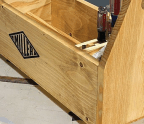‘The Farmer’s Air Force’



Commonly known as crop dusters or air sprayers, aerial applicators with names such as “Air Tractor” are actually farm implements, just like a tractor or combine. In most cases, however, aerial “tractors” are owned by specialized companies that contract with the farmer for their services.
Sometimes called “the Farmer’s Air Force,” agricultural aircraft have been a fixture in the U.S. for the past 100 years. Following World War I, a war-surplus Curtiss JN-6 Jenny was pressed into service in the first-known use of an aircraft to dust crops with a powder-based insecticide, spurring adoption of the phrase “crop duster.” In a joint effort by the U.S. Department of Agriculture and the U.S. Army Signal Corps. The Jenny was modified to spread lead arsenate to kill catalpa sphinx caterpillars at an orchard near Troy, Ohio.
After World War II, surplus training biplanes such as the Boeing Stearman, with bins or tanks in place of the front cockpit and replacement engines doubling the horsepower, were commonly used in the burgeoning “aerial applications” industry, one which increasingly relied on liquid products rather than powder. In 1949, aeronautical designer Fred Weick, based at Texas A&M University, designed a dedicated agricultural aircraft: the AG-1.
Development of the AG series
The AG-1 first flew
You’re reading a preview, subscribe to read more.
Start your free 30 days



